Copyright 2020 - 2021 irantour.tours all right reserved
Designed by Behsazanhost
Kooch or Nomadic migration
Kooch or Nomadic migration
Epic Migration in an Ancient Nomadic Style
One of the most memorable moments of my life has been, no doubt, my time spent with various groups of nomads. I spent an incredible few days experiencing a nomadic lifestyle. Every single day I experienced something novel or life-changing-moments of 'epiphany Stunning images I had long seen in some of my favorite books and movies and that have become recurrent references for me, suddenly became flesh and full of life in front of me. It was such a liberating and empowering experience, stepping rapidly across the stones with the sound of bells in my ears and passing through mountain ranges while staring at the landscape. I just remember wanting to hold on to that feeling forever and thinking how much I wanted more of that in my life. Apart from the amazing experience of living with nomads, their memorable migration, the centuries-old tradition of moving with flocks, is quite exhilarating and it contains some real gems which make it an unforgettable experience. Iran has so many precious but somehow hidden rich cultural gems, including the subject of this article: 'kooch
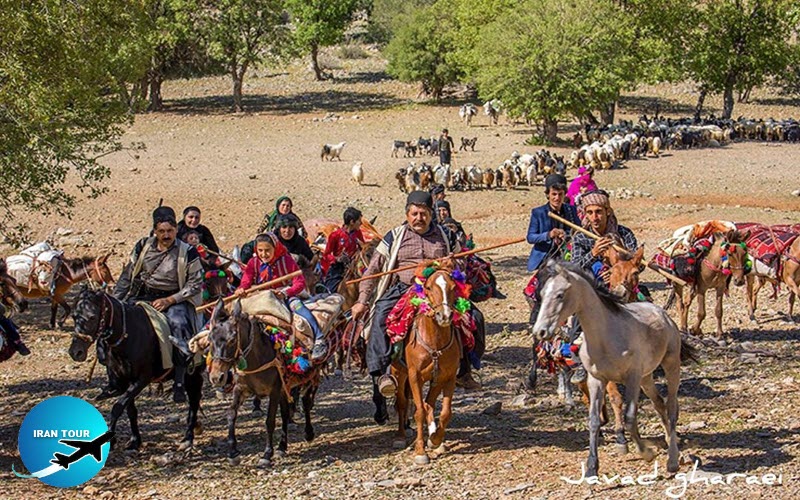 |
-Nomadic Tribes of Iran
There are a wide variety of Iranian peoples such as Lors, Kurds, Baloch, Arabs, Turks, and Guilaks. These various ethnic groups live all across Iran; many Azeris (Turkic peoples) are located in the northwest of Iran, other Turkic peoples are inhabitants of the Zagros and Alborz mountain ranges; Turkmen, Baloch, and Arabs are scattered across different parts of the Iran and they have inherited different rituals from their ancestors.
The most well-known nomadic tribes include Shahsevan, Bakhtiari, and Qashqai peoples as well as some Turkmen peoples. The nomads of Iran are indigenous peoples and have been in the region for at least 8000-10,000 years. They are independent, simple, hard-working people who have chosen to travel to make a living.
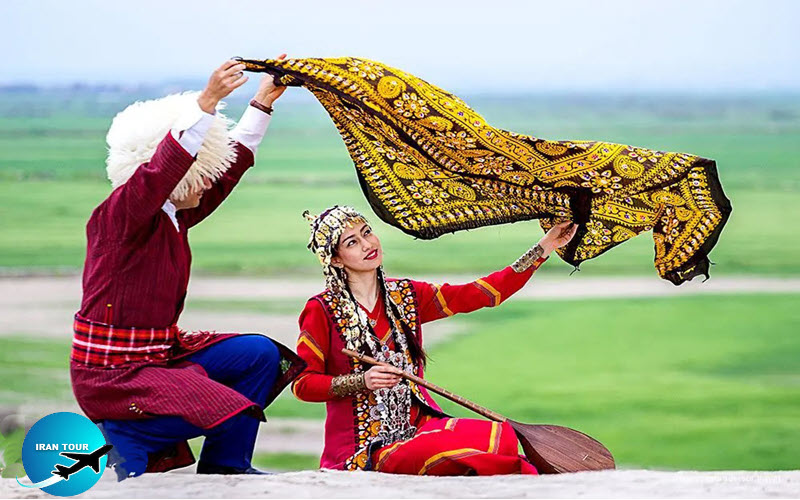 |
Turkmen: they are Turkic people, many of whom live near the border with Turkmenistan, in Golestan Province. They mainly take care of horses and camels as livestock.
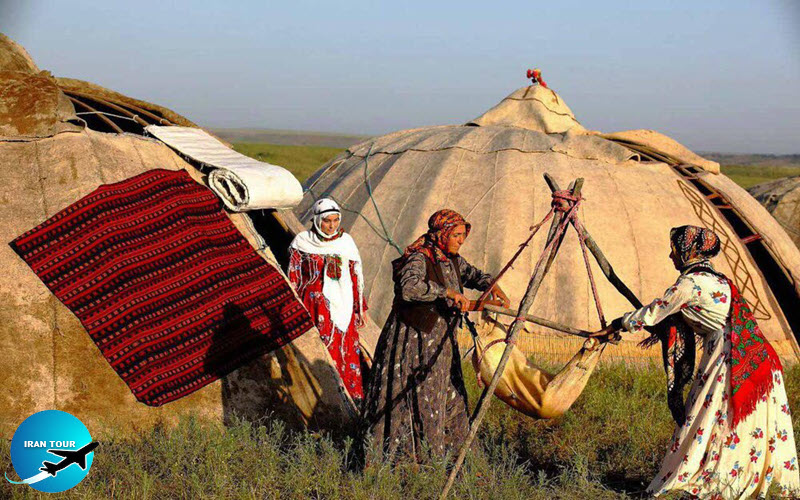 |
Shahsevan: the term means 'the ones who love the Shah'. They live in the northwest of Iran, near the border with Azerbaijan in Ardebil and East Azerbaijan Provinces.
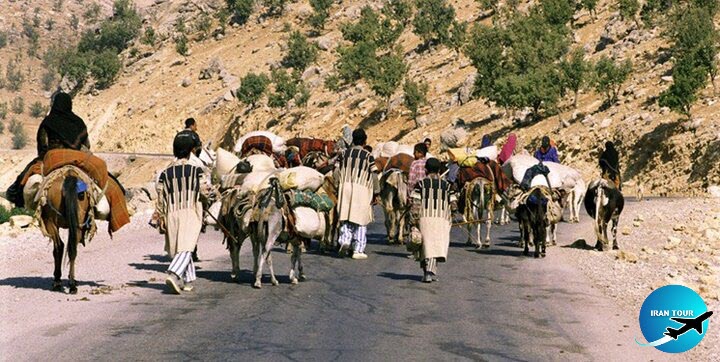 |
Bakhtiari: the term means 'the ones who are fortunate. They live in the Zagros Mountains in the west of Iran in Chaharmahal & Bakhtiari Province. These nomads make up the largest nomadic tribe in Iran.
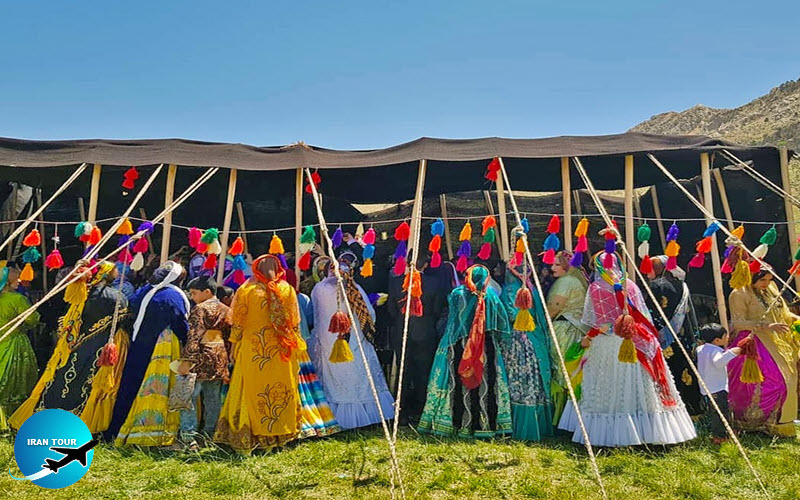 |
Qashqai: these people are also Turkic and speak Turkish. They live in Fars Province, in the south of Iran. They now remain in one place throughout the year.
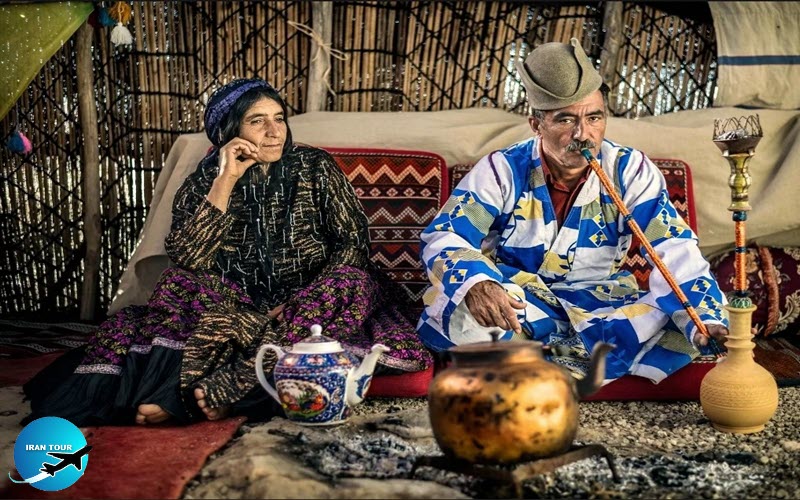 |
-Nomads Through Time
There are estimated to be around 1.5 million nomadic pastoralists living in Iran today, although the figure is gradually decreasing. In 1918, nomads made up 50% of the Iranian population. In 1968, that proportion had decreased to 25% and, in 2017, it dropped to just 1-2% of the population - spread over some thirty-five million hectares in Iran.
What makes nomadism different from other lifestyles is: 1. dependence on livestock 2. use of natural pastures 3. kooch; moving from place to place in order to find fresh pastures and avoid hot or cold weather.
Currently, Iran's nomadic tribes enjoy three different lifestyles: nomadic, semi-nomadic & settled. Shahsevans are now completely settled in villages. 90% of the previously nomadic Turkmen and Qashqai peoples are also settled in their tents or in surrounding villages and they rarely migrate. But the Bakhtiari people are the largest group who continue to move from place to place with their livestock.
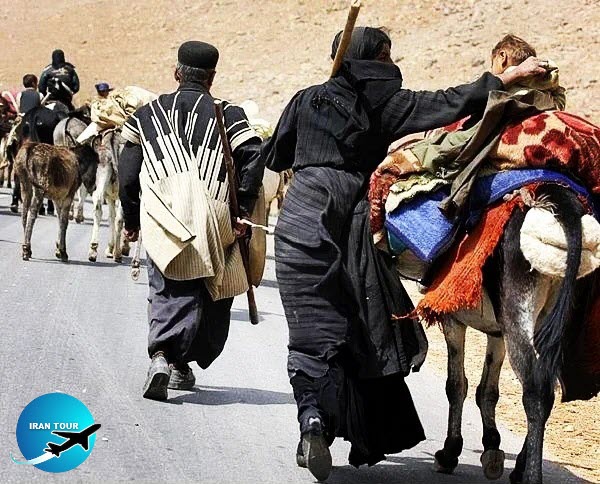 |
-Kooch: The Epic Migration of Nomads
Nomadic pastoralism is officially known as transhumance - which in the Lori language is knowns as 'kooch' - and it is the very epitome of the nomadic lifestyle. It is a population movement that is undertaken in order to accomplish a variety of goals. Changing the location in search of grasslands and migrating in groups across ancient nomadic paths, which have been trodden by feet and hooves for thousands of years, are two of the preeminent characteristics of nomadic life. Kooch happens every year on a regular basis. Each tribe takes the same route each year, and they visit pastures that no other tribes visit. Wealthy nomads who have big flocks and need more facilities usually choose longer migration routes. By contrast, those who are less fortunate choose shorter routes and usually postpone their migration.
Iranian nomads also have their migratory routes, called il-rah, through which they pass during their seasonal migration. The seasonal migrations (bar) vary in length but can reach 300 km. Nomads often migrate in large groups, or at least 'nomadic camps' (maal), and each nomadic community has specific systems of governance.
Kooch may take from one to six weeks. Since there are few facilities along these nomadic migration routes, they carry everything they may need for up to two months. The timing of their migration is also of primary importance as, to allow for safe passage, the tribe must move late enough for the ice to have melted but early enough to arrive at green pastures before they are overgrazed by other animals.
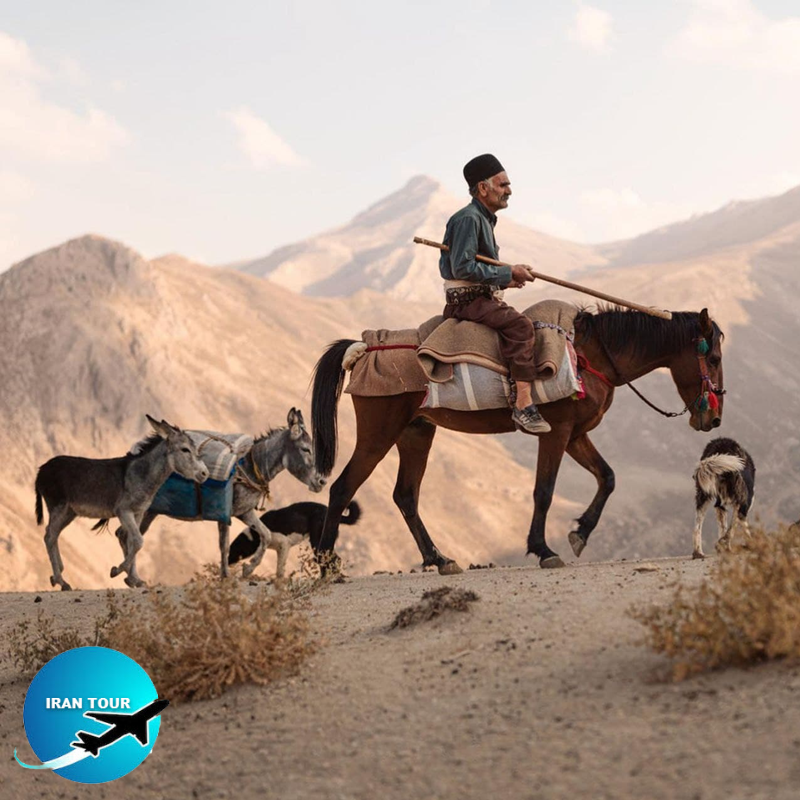 |
-Why Do Nomads Migrate?
Each year, nomads move between summer pastures (Turkic: yeylaq) and winter pastures (Turkic: qishlaq) for many reasons. The main reason for this migration is to find grasslands for their animals to graze on. But there are other reasons too:
In either hot or cold seasons, there may not be enough food for the flocks in one area alone. And since nomads are highly dependent on nature, they need to follow its rhythm. Even if they do not have any flocks, they follow the same pattern of migration in order to avoid bitterly cold winters or scorching hot summers. Nomadic men have the opportunity to farm different pastures.
The fruits of the oak tree provide another impetus for migration. In autumn, when the nomads return to their winter pastures, the acorns are fully ripe. Nomads pick them and grind them into flour in order to make delicious bread. This bread is used throughout the following winters. Last but not least, the tribe's main economic activities are determined by the migration cycle. Nomads are accustomed to migration. Without it, they feel something is missing - as if they have lost their main purpose in life. Each year, as the time to migrate approaches, they are thrilled at the prospect of their coming kooch.
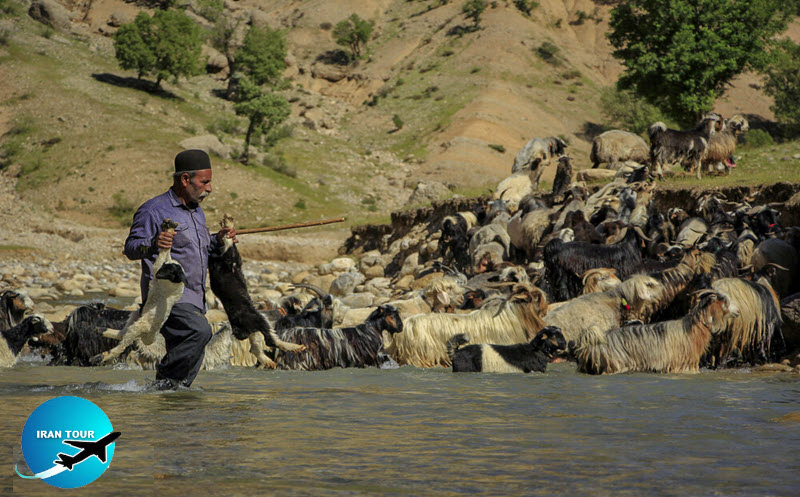 |
-Kinds of Migration:
Vertical & Horizontal Nowadays, there are different methods of relocation exercised by nomads around the globe. 'Horizontal migration occurs in vast, dry deserts, where water and grass can scarcely be found, like the arid steppe in the Arabian Peninsula or the Kazakh Steppe. There is also another type of relocation, called "vertical' migration, which occurs in regions with a large difference in altitude, such as Iran, where people move from low altitudes to higher ones in search of more favorable weather for their families and their animals. For instance, the Bakhtiari tribes migrate vertically between the north and the south of the Zagros mountain range. In terms of scope, there are two types of nomadic migration, one is the long 'trans-regional' route ascribed to the migration of Central Asian nomads. The other is known as “local migration, which is attributed to tribes such as the Qashqai and Bakhtiari, etc.
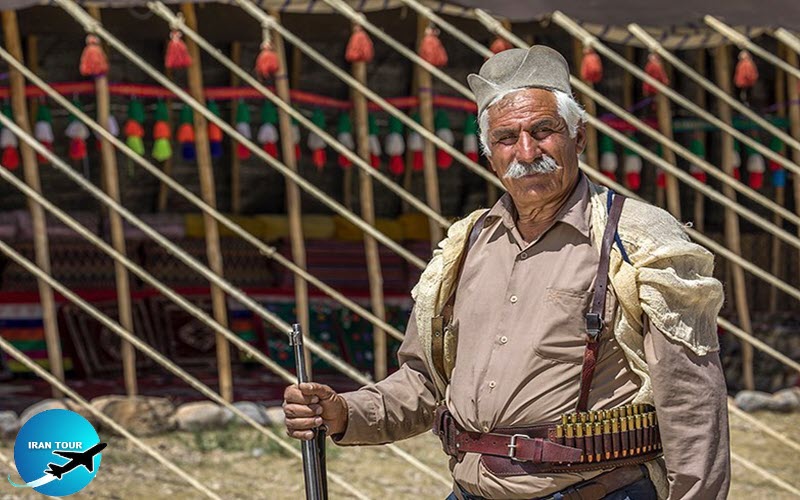 |
-Who are 'Persia Nomad Tours' & What Do They Wish to Achieve?
In 2015, we trekked with a group of Bakhtiari nomads, during which we gained a better understanding of Iranian nomads, their unique lifestyle, and their great knowledge of nature. We perceived the significant roles the nomads have played in preserving nature and, quite ironically, we came to know how embarrassed they feel about their unique cultural heritage.
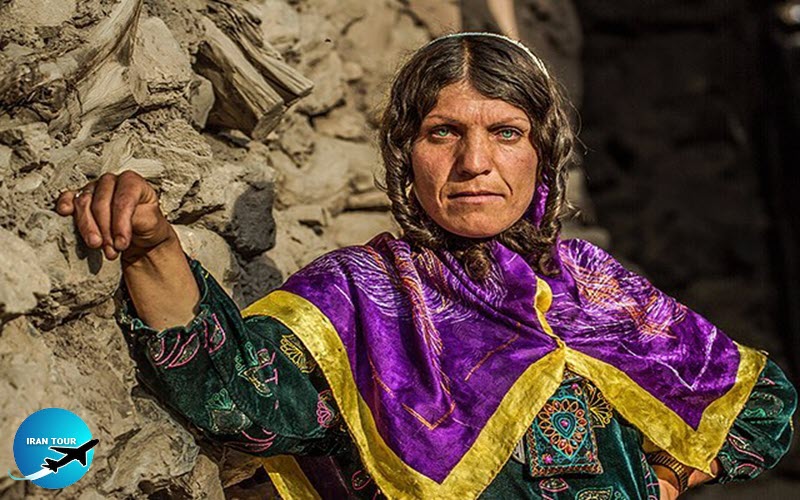 |
Unfortunately, their conservational awareness is in danger of extinction, even though it has the potential to solve current and future environmental issues. We created 'Persia Nomad Tours' in order to empower local communities by helping them with supplementary income. By helping them to get to know how precious their lifestyle is, we hope that they will continue to conserve it. In other words, we hope that they will not abandon their tents to live in the cities.
So, each year, at the time of migration, we join some Bakhtiari nomads and accompany them while they travel through the Zagros hinterlands. Throughout the tour we live a nomadic lifestyle: we get up at sunrise, herd the flock, milk the goats, make bread, fetch water and wood, etc. All in all, we immerse ourselves in the nomadic lifestyle. It is of mutual benefit: we have the opportunity to gain first-hand experience of a nomadic lifestyle and their thorough knowledge of nature and the nomads are encouraged to preserve their lifestyle.
- Details
- Category: What to see in IRAN